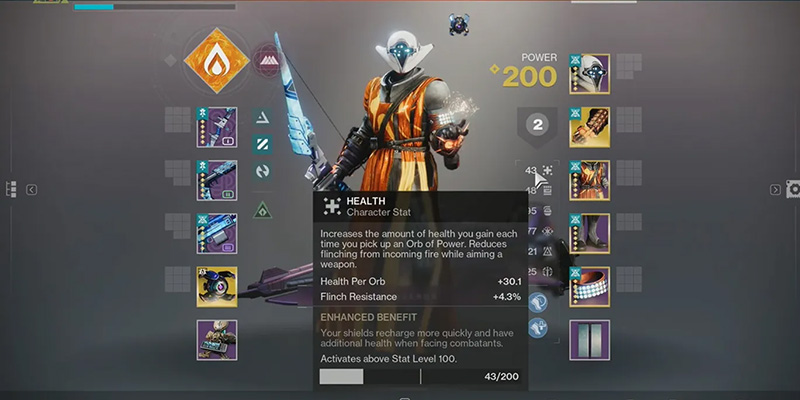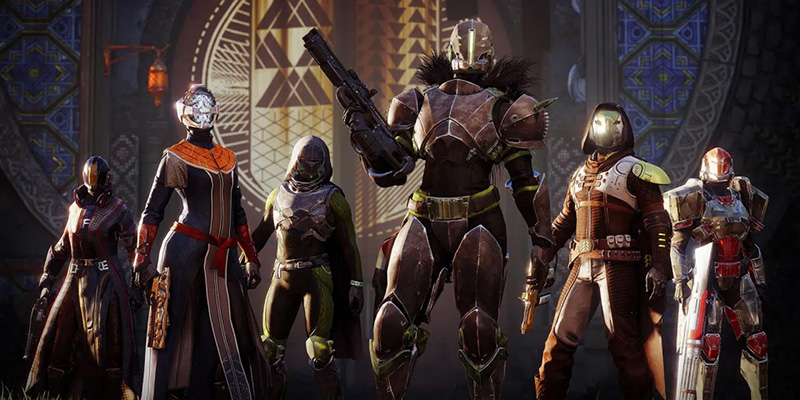Edge of Fate flipped Destiny 2's PvP on its head. The armor stat overhaul ditched the old Recovery and Resilience system for something completely different, and if you're still building like it's last season, you're going to get stomped.
After hundreds of hours testing the new system, we've figured out what actually works. The meta has shifted hard toward specific stats that can make or break your Crucible games, and understanding these changes is the difference between fragging out and getting farmed.
What Changed with the New Stats
Out with the Old
Recovery got completely scrapped. Bungie replaced it with a Health stat that functions differently, and you can now push stats past 100 for bonus effects.
Every Guardian now has the same base health pool in PvP, but your stat investment determines how quickly you bounce back from fights and how much damage you deal. The traditional tier system (where you needed exact multiples of 10) is dead too. Now 73 Intellect is better than 70, so you don't need perfect builds anymore.
The New Rules
Six stats matter now, and each one can go past 100 for bonus effects. You can't max everything, so you need to pick your battles. Some stats became absolutely crucial (looking at you, Weapons), while others dropped way down the priority list.
The biggest change is damage scaling in PvP. For the first time, your stats directly affect how much damage you deal to other players, creating new breakpoints that completely change weapon performance.

The Stat Tier List
S-Tier: Must-Have Stats
This stat broke the game open. Combined with weapon perks and other damage buffs, you'll hit breakpoints that completely change your weapon's performance.
This stat broke the game open. Every 10 points past 100 gives you up to 6% more damage against other players. That might not sound like much, but it changes everything.
Here's what 150+ Weapons does for popular weapons:
- 180 RPM Hand Cannons with Enhanced Precision Instrument can three-tap with headshots
- 390 RPM Pulse Rifles (like Red Death) kill in six crits instead of more
- Even Igneous Hammer without damage perks hits for nearly 100 damage per shot
You also get faster handling and reload speed, making your guns feel snappier across the board. Most players should aim for 150-190 points, with 150 being the sweet spot for most loadouts. Going to 190 makes every weapon feel incredible, but it eats up a lot of stat points.
The damage boost stacks with other effects too. Pair it with Radiant or damage perks, and you'll hit breakpoints that shouldn't exist. This stat single-handedly created the current meta.
You need at least 70 Super for Competitive and Trials. 100 is better if you can manage it, but don't go over 100 in PvP since the extra Super damage isn't worth the stat points.
Control is more forgiving because you get Super energy from playing objectives, but in round-based modes like Trials, low Super means you're basically playing without a Super. That's an instant disadvantage against teams that invested properly.
A-Tier: Strong Support Stats
All players have the same health pool now, but Health determines how fast you start regenerating after taking damage. Think of it as the old Recovery stat, but it works a bit differently.
120-130 Health feels like having 10 Recovery used to. 150 Health gives you solid uptime between fights. 160 Health is like the old 100 Recovery, letting you bounce back fast from any engagement.
You'll really feel the difference when you're burning from abilities or caught in smoke bombs. Without decent Health investment, damage-over-time effects become torture. The stat also gives you better flinch resistance and more health from orbs, which can matter in longer games.
Most players should shoot for 130-150 Health. You can get away with less if you play carefully, but the regeneration difference is night and day.
Hunter dodge with Overshield? Yep. Warlock rift with Overshield? Absolutely. Titan Thruster with Overshield? You got it.
Some players are building entire strategies around this, especially Titans with Thruster and SMGs. You get weak in a fight, Thruster for the Overshield, then re-engage with an advantage. It's not game-breaking, but it's solid utility.
The Overshield gets countered pretty easily by high Weapons investment though, so don't build your entire strategy around it. Use it for the cooldown reduction first, and treat the Overshield as a nice bonus.
B-Tier: Situational Picks
Grenade and Melee work like they always have for cooldowns, but going past 100 boosts Grenade and Melee damage. The damage increase is real, but usually not as impactful as investing those points in Weapons.
Where these stats shine is in ability-focused builds. For Strand builds that need constant grapple uptime, max Grenade. For Smoke Bomb setups, Melee becomes valuable. For standard gunplay builds, these are luxury stats you invest in after covering the essentials.
The damage scaling can be nice for finishing off weakened enemies, but the Weapons stat gives you more consistent value in most situations.
Building Your Loadout
The Universal Framework
This priority order works for all classes and most playstyles:
- Weapons: 150+ points - Non-negotiable for competitive play
- Super: 70-100 points - You need your Super
- Health: 120-150 points - Stay in fights longer
- Everything else: Preference-based - Build around your playstyle
Sample Builds
| Stat | Standard Build | Ability-Focused |
|---|---|---|
| Weapons | 150 (3% damage boost) | 150 (still need damage) |
| Super | 80 (reliable generation) | 70 (minimum viable) |
| Health | 130 (solid recovery) | Whatever fits |
| Class Ability | 60-80 (reasonable cooldowns) | Fill as needed |
| Grenade/Melee | Whatever's left | 100+ (if ability-focused) |
This build works for 90% of players and covers all the essential bases without going overboard on any single stat.
Only go the ability-focused route if you're building specifically around abilities. The gun meta is too strong to ignore Weapons investment completely.
Making Tough Choices
You can't have everything, so you'll need to make trade-offs. Most players struggle with the Health vs. Class Ability decision after covering Weapons and Super.
If you play aggressively and take lots of fights, prioritize Health. If you rely heavily on your class ability for your gameplan, invest there instead. There's no universal right answer since it depends on how you play.

Common Mistakes to Avoid
You'll spend entire matches without your Super while enemies who invested properly will pop theirs multiple times.
Even if you're not a "Super player," having it available changes how enemies play against you and gives you comeback potential in crucial rounds.
Ignoring Health Completely
The base regeneration without Health investment is painfully slow. You'll notice it most against DOT effects and in rapid-fire game modes like Control. What used to be minor chip damage becomes a serious problem when you can't recover quickly.
Chasing Perfect Stat Tiers
The old system required multiples of 10 for maximum efficiency. That's gone now. Don't stress about having exactly 80 vs. 83 in a stat. Just get close to your target numbers and move on.
Overlooking Weapons Stat Scaling
Some players think the 6% damage boost is negligible. It's not. Combined with weapon perks and other damage buffs, you'll hit breakpoints that completely change your weapon's performance. This stat is the foundation of the current meta.
Advanced Considerations
Weapon-Specific Builds
Different archetypes have different Weapons stat requirements. Hand cannons might want 170+ for optimal breakpoints, while some pulse rifles are fine at 150. Test your favorite weapons at different investment levels to find their sweet spots.
Mode-Specific Adjustments
Control and other objective modes are more forgiving on Super requirements because you generate Super energy from playing the objective. Trials and Comp demand higher investment because rounds are shorter and Super opportunities are limited.
Future-Proofing Your Build
Higher-tier armor will eventually give you more stat points to work with, opening up builds that aren't viable yet. Plan your ideal distribution now, but don't stress if you can't hit every target with current gear.
- More flexibility than old tier system
- Every stat point matters now
- Damage scaling adds strategic depth
- Build diversity increased significantly
- Punishes poor stat allocation severely
- Requires complete rebuild knowledge
- More complex than previous system
- Some legacy builds became obsolete
The Bottom Line
Edge of Fate's stat system rewards smart investment over perfect builds. Focus on Weapons and Super first, get enough Health to stay competitive, then customize based on your playstyle.
The meta shifted hard toward gunplay enhancement and reliable Super access. Players who adapt to these priorities will dominate those still building like it's last season. The new system has more flexibility than the old one, but it also punishes poor stat allocation more severely.
Start with the framework above, test different configurations, and adjust based on your results. The most important thing is understanding why these stats matter and how they affect your gameplay. Once you get that down, you can tweak the details to match your preferences.
